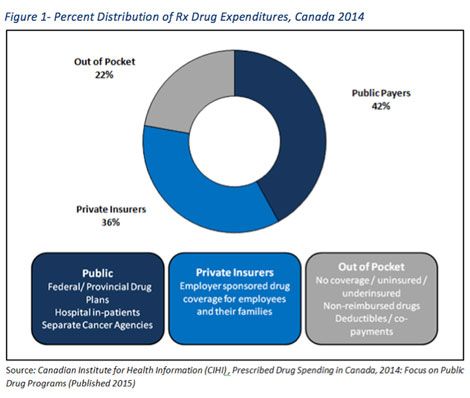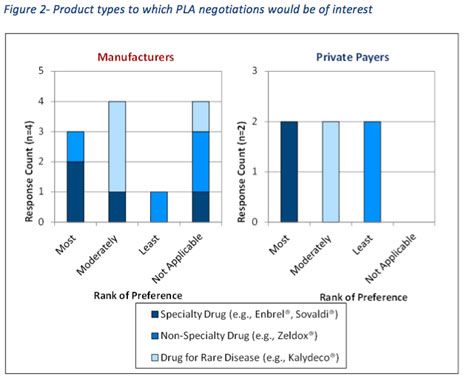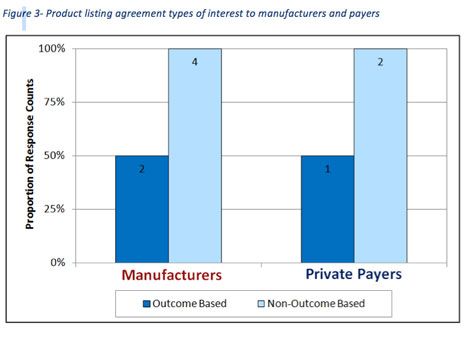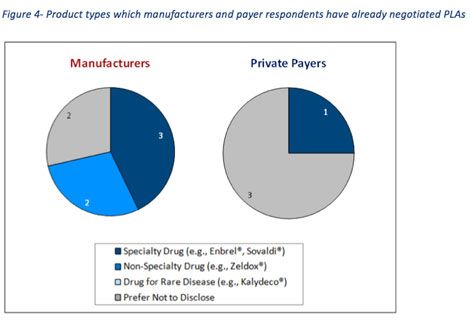Private Payers in Canada Embrace Product Listing Agreements
Arvind Mani and Sherry O' Quinn outline the prevalence of private payer PLAs in Canada.
For the past several years, pharmaceutical private payers in Canada have been issuing dire warnings about the financial sustainability of their drug plans but their concerns often fell on unsympathetic ears. In fact, the Chicken Little quote, “The sky is falling!” was often used by pharmaceutical manufacturers to describe private payers’ reactions to the growing impact of specialty drugs on their overall drug budget. Private payers have argued that Canada has become a market where drug list prices are regulated by the Patented Medicine Price Review Board (PMPRB),[1] while public drug plans have been able to negotiate additional discounts through confidential product listing agreements (PLAs) with the pan-Canadian Pharmaceutical Alliance (pCPA).[2] Negotiating PLAs has been a standard procedure in provincial markets for several years, and although private payers have expressed interest in participating in pCPA negotiations, it is unlikely that they will be involved in this process, at least in the short-term.
Private payers have been pressing the PMPRB to be more stringent on price regulation since they view non-transparent PLAs with public payers as being subsidized by the high prices paid by private payers and cash paying consumers. As a result of such pressures, the PMPRB recently issued a Strategic Plan that is meant to, “enable [the PMPRB] to emerge stronger and more effective than before.” The PMPRB appears to be eager to re-invent itself in order to increase its relevance to its stakeholders. Given the decreasing sense of relevance of the PMPRB and inability to join the pCPA process, private payers – the community of insurers, Pharmacy Benefit Managers (PBMs) and employers in Canada – are starting to build internal competencies aimed at negotiating their own PLAs with pharmaceutical manufacturers.
In September 2015, Manulife, Canada’s largest private insurer, introduced its new DrugWatch™. It has been described by Manulife as the only program of its kind in Canada which “closely monitors the drug landscape and analyzes the effectiveness and financial impact of new medications, to ensure you receive value for your drug benefit dollars.” It also places emphasis on “expert negotiation” to seek the best possible drug prices for their clients. This could mark a sea-change in the private payer landscape depending upon how other major carriers respond to this initiative.
This article provides some context on the Canadian market and outlines the prevalence of private payer PLAs in Canada. It describes the implications to manufacturers and insurers and provides an outlook on the potential challenges and issues faced by manufacturers in negotiating such PLAs.
Context
Canada is among the largest pharmaceutical markets in the world. Representing 2.5% of global pharmaceutical sales, it holds the 9th rank among countries in terms of sales. Within Canada, retail sales of prescribed and non-prescribed drugs ($33.9 billion in 2014) constitute the second largest category of total health expenditures, behind hospital spending ($63.5 billion in 2014).[3]
The Canadian Institute for Health Information (CIHI) reports that prescribed drug spending accounts for 85% of total drug spending or 13.4% of total health expenditures. According to CIHI it is estimated that the private sector financed more than half of prescription drug costs (approximately 58%) in 2014, or $16.7 billion CAD. Public payers covered the remaining 42% of prescription drug costs amounting to $12.1 billion CAD (see Figure 1).

Prevalence of Private Payer PLA Agreements
Unlike the pCPA, which publishes information on the products under review and provides guidance on the PLA process, there currently is no publicly available information indicating the prevalence of private payer PLAs in Canada. To address this information gap, PDCI Market Access and H3 Consulting developed an on-line survey in 2015 to obtain the perspectives of brand pharmaceutical manufacturers, private insurers, and PBMs on their experience with PLAs. The survey consisted of questions to measure stakeholder’s interest, experience and expectation of private payer PLAs.
In total, 27 individuals (19 manufacturers and 8 private payers/PBMs) responded to the survey. Each participant completed one of three surveys depending on their response to preliminary questions regarding their previous experience with private payer PLAs. The responses were grouped as:
- Negotiation-Naïve Respondents with No Interest in Negotiating
2. Negotiation-Naïve Respondents with Interest in Private Payer PLA negotiation
3. Experience Negotiating Private Payer PLAs
1. Negotiation-Naïve Respondents with No Interest in Negotiating
Approximately 37% of the survey respondents (i.e. eight manufacturers and two payers) indicated that they have not yet negotiated a private payer PLA and are not interested in doing so within the near future. Manufacturers and payers in this segment who provided comments agreed there was no need for PLAs with private payers. Two manufacturers also believed their products demonstrated sufficient value at the market price, and one said no insurer had yet approached his/her company.
2. Negotiation-Naïve Respondents with Interest in Private Payer PLA negotiation
Approximately 22% of the survey respondents (i.e. four manufacturers and two payers) indicated that they have not yet negotiated a private payer PLA and are interested in doing so within the near future. Manufacturers noted that the reason for not yet negotiating a PLA was due to a lack of necessity, resources or initiative from private payers. As can be seen from Figure 2 below, both manufacturers and private insurers were most interested in negotiating agreements for specialty products.

Manufacturers believed they would primarily benefit from PLAs through preferential listing but indicated that PLAs may improve listing criteria or minimize barriers to patient access. Both private payer participants indicated that they believed their company would benefit from administrative fees, lower drug prices for plan members/sponsors, and competitive advantage in the market. Figure 3 reveals that there was a consensus among private payers and manufacturers that they are open to negotiating non-outcome based PLAs (i.e. price rebate) while only 50% of private payer and manufacturer respondents indicated an openness to outcome-based PLAs (i.e. performance linked).

3. Experience Negotiating Private Payer PLAs
Approximately 41% of the survey respondents (i.e. seven manufacturers and four payers) indicated that they have experience negotiating private payer PLAs. For those that were willing to provide clarity on the type of products for which they negotiated an agreement, the majority indicated they had negotiated agreements for specialty drugs, while none indicated experience negotiating dugs for rare diseases (see Figure 4).

Most private payer PLA agreements were completed in 2015, but a minority date back as far as 2012. The majority of the manufacturer respondents indicated the reason they negotiated in response to a request from the private payer. Nearly all manufacturer respondents indicated experience negotiating non-outcome based agreements while both private payer respondents indicated they had experience with both non-outcome and outcome based negotiations.
Finally, it should be noted that two (of four) private payers and five (of seven) manufacturer respondents indicated that they would be actively engaging in more PLA negotiations with private payer in the future. This suggests that those that have had experience with negotiation are poised to engage in more negotiations in the future.
Implications
Manufacturers
Results of the survey suggest that manufacturers may be reluctant to negotiate private payer PLAs because private payers and PBMs rarely, if ever, resist prices originally proposed by the manufacturer. Pharmaceutical manufacturers may be more interested in negotiating with larger private payers because they represent millions of plan members, or with specific payers that have been more likely to implement cost-control mechanisms in the past. Some manufacturers believe that their products offer sufficient value at current prices. Manufacturers are most interested in using PLAs to secure preferential (rather than exclusive) listings or at least to eliminate any disincentive to use their product relative to a competitor. Manufacturers may be more concerned with ensuring PLA-based price or cost reductions flow to the patient’s cost-sharing. This will require transparent accounting.
Private Payers
Private payers are not facing active pressure from their clients (employers) or benefit advisors to lower prices. It is not certain whether the views of insurers and PBMs regarding PLAs are the same as employers, or how much diversity exists across the well over 100,000 Canadian group insurance contracts. Private payers, particularly smaller insurers, do not have the resources in place to actively negotiate PLAs with the pharmaceutical industry. Insurers and PBMs may wish to keep a share of price reductions as compensation for the cost of negotiating and managing PLAs. The amount retained and their willingness to disclose this information to employers and plan members are unknown at this time, but PBM experience in the US suggests transparency will be important. There are challenges ahead to consolidate negotiations among more than one private payer or at an industry level. Private insurers might eventually prefer to work with their provincial colleagues at the pCPA table, but neither side may be ready to begin those negotiations.
Outlook
Private payers are unlikely to be as well prepared to negotiate PLAs as drug manufacturers. As of December 2015, manufacturers have 89 completed and 24 ongoing PLAs through the pCPA. Manufacturers appear to have consolidated their knowledge from the pCPA process and other international markets where risk-sharing agreements also exist. It is expected that some private payers (through their industry group, the Canadian Life and Health Insurance Association [CLHIA]) are likely to pursue PLAs in a more organized and aggressive manner as more sophisticated resources – human and technological – are devoted to drug plan management over the next 2-3 years. This resource intensity favors the larger insurers and PBMs, except if the CLHIA takes the lead. It is unclear if drug manufacturers have or share a preference about how this collaboration may evolve. They could argue such negotiations are in the public interest and very similar in process and impact to pCPA agreements. It is not clear if private market PLAs benefit drug manufacturers, other than on a very selective basis. In the absence of tangible or immediate threats to access, payers have a greater interest in initiating discussions than manufacturers. Learning from the US private market and the lack of transparency surrounding pCPA negotiations, it is expected that the private market – led by large employers, unions and perhaps their benefit advisors – to press for more transparent PLAs. Patient groups may want to know that their cost-sharing is reduced from price cuts.
The results of the PDCI/H3 private payer PLA survey coupled with the launch of Manulife’s DrugWatch™ program signal that private payer concerns over their escalating cost of specialty products can no longer be viewed by pharmaceutical companies as unwarranted. With growing membership of the pCPA, the re-evaluation of PMPRB’s relevance and the growing prominence of private payer product listing agreements, perhaps now pharmaceutical stakeholders in Canada may be the ones crying “the sky is falling”.
About the Authors
Arvind Mani is the Director of Market Access and Policy Research at PDCI. Sherry O’Quinn is the Director of Reimbursement Strategy, responsible for leading PDCI’s product listing agreement (PLA) services and related strategic reimbursement advice.
Notes
[1] The PMPRB is a quasi-judicial regulatory body based in Ottawa, Canada which was created in 1987 to ensure that patented drug prices are not excessive.
[2] The pan-Canadian Pharmaceutical Alliance was created by the Council of Federation in 2010 and is firmly established in the Canadian market access landscape. The pCPA’s goals are to negotiate collectively to: increase access to drugs, improve consistency of decisions, achieve consistent and lower drug costs, and reduce duplication & improve use of resources.
[3] Canadian Institute for Health (CIHI), Prescribed Drug Spending in Canada, 2014: Focus on Public Drug Programs (Published 2015)
Navigating Distrust: Pharma in the Age of Social Media
February 18th 2025Ian Baer, Founder and CEO of Sooth, discusses how the growing distrust in social media will impact industry marketing strategies and the relationships between pharmaceutical companies and the patients they aim to serve. He also explains dark social, how to combat misinformation, closing the trust gap, and more.